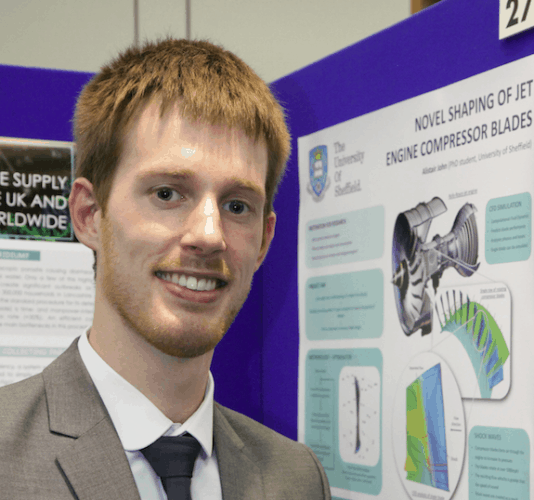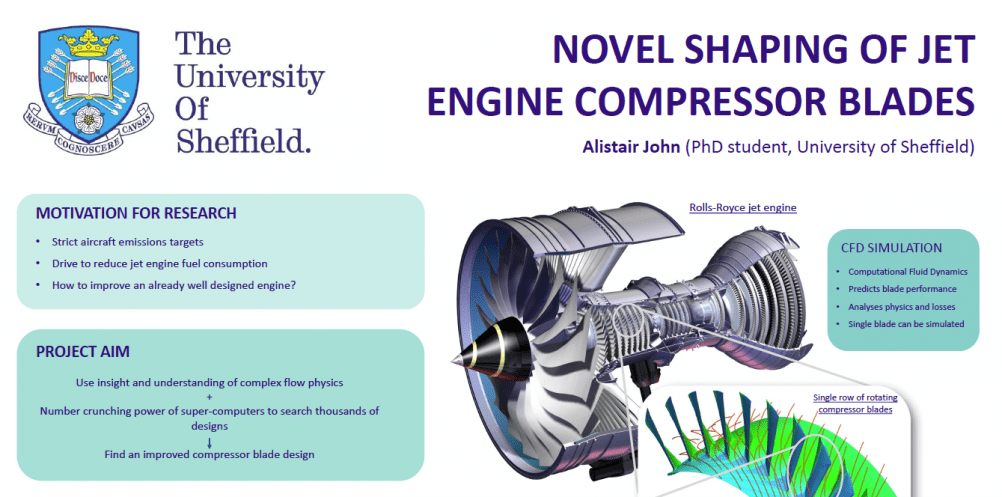The aim of the event is to support and promote Britain’s early-career research scientists, engineers, technologists and mathematicians, with entrants designing posters to illustrate their work, and presenting it in parliament. The Student Engineer caught up with Alistair to find out what drew him into engineering, how he got involved in the competition, and what his plans are for the future.

What was your path into engineering and what attracted you to it?
I’ve always enjoyed problem solving, which is what engineering is all about. I enjoyed maths and physics at school, and mechanical engineering seemed like the obvious choice.
You’re currently studying for a PhD at Sheffield. Did you study for your degree there as well?
I studied at Sheffield for my MEng Mechanical Engineering degree. I graduated top of the year and received the Mappin medal from the university, as well as the IMechE award for best final year project. As a result I was awarded a Faculty of Engineering scholarship to undertake my PhD.
Can you tell us a bit about SET for Britain, and how you came to be involved?
I heard about SET for Britain through a university announcement. Its aim is to promote Britain’s early-career researchers and highlight the range of excellent research being undertaken across the UK. I thought it was a great opportunity to promote my research and gain experience presenting my work to those outside of my field. I submitted an abstract where I had to explain my work at a level that sixth-form students would understand, and I was selected to take part in the event.
What led you to focus on compressor blades in jet engines for your subject? Did the project involve working with industry partners?
In the third year of my degree I undertook a summer placement at Rolls Royce. This work continued into my final year project where I investigated the 3D design of compressor blade leading edges. My PhD is funded by a scholarship from the university and supported by Rolls Royce. My PhD allows me to carry out state-of-the-art research with a world leading jet engine manufacturer. I really enjoy it.
 Click to view full poster
Click to view full posterIt must’ve been difficult to reduce a complex topic like this to a single poster. What was your process?
It was difficult to explain such a complex subject as there is a fair bit of background knowledge needed to understand the work I’ve been doing. I decided to break down the explanation into several levels: first showing how a jet engine works, then describing the role of compressor blades, the flow physics around a single blade, the impact of shocks due to supersonic flow, how I am optimising the shape of these blades, and finally the interesting results that show the benefit of using a novel blade design. I used clear, high-resolution images on the poster to describe my work. This made it simple to explain the concepts to those interested.
My poster won this year’s engineering PhD poster competition at Sheffield University, but unfortunately didn’t win anything on the day in parliament.
How was the experience of showcasing your work in parliament?
It was an honour to be selected to present my work in parliament. I enjoyed presenting my work to experts from other fields as well as various MPs. The MP for Sheffield Central was present and it was great to show him some of the work taking place at the University.
What are the next steps you have planned for your career?
Next month I will be presenting the work covered in the poster at the ASME Turbo Expo in Seoul, South Korea. For the remaining year and a half of my PhD I will continue to work closely with Rolls Royce, with my research focusing on fan blade tip design.
After my PhD I plan to become an academic, hopefully continuing my research at the University.
Many thanks Alistair!




Swiss geoengineering start-up targets methane removal
No mention whatsoever about the effect of increased methane levels/iron chloride in the ocean on the pH and chemical properties of the ocean - are we...